Rocky Mountain spotted fever (RMSF) is:
- Rapidly progressive and can be fatal;
- Endemic throughout the US and the Americas; and
- Difficult to diagnose but critical to treat early.
RMSF is the most severe spotted fever rickettsiosis (SFR) in the US. Current surveillance does not distinguish between SFR and RMSF because commonly used diagnostic testing cannot differentiate among the spotted fever group Rickettsiae. This course will focus on RMSF, but it is important to remember that other spotted fevers may present similarly to RMSF during early illness; all are treated with the same medication.
Awareness and early recognition are key to reducing RMSF morbidity and mortality.
RMSF is the most severe rickettsiosis in the US, with mortality rates as high as 25% in untreated cases.
Half of deaths from RMSF occur during the first 8 days of illness.
Rash in RMSF:
- Rash is present in less than 50% of cases in the first 3 days of symptoms.
-
Late onset rash is a risk factor for fatal outcome.
-
Providers should never wait for the rash to begin treatment.
Patients often seek care within 1–3 days of illness onset. However, rash associated with RMSF most often appears 2–4 days after symptoms begin, although this can vary widely between patients. Never wait for the rash to begin treatment with doxycycline!
Treatment
Doxycyline is the treatment of choice for RMSF in all age groups.
- Treatment with doxycycline within the first 5 days of symptoms is most effective at preventing morbidity and mortality.
- Recommended by American Academy of Pediatrics (AAP) and CDC.
- Most effective at preventing severe illness and death when administered within the first 5 days of symptoms.
Treatment duration
- The typical duration of treatment in uncomplicated cases is 5–7 days, or at least 3 days after fever subsides and until there is clinical improvement.
- Patients with severe illness may require longer periods of treatment and supportive care.


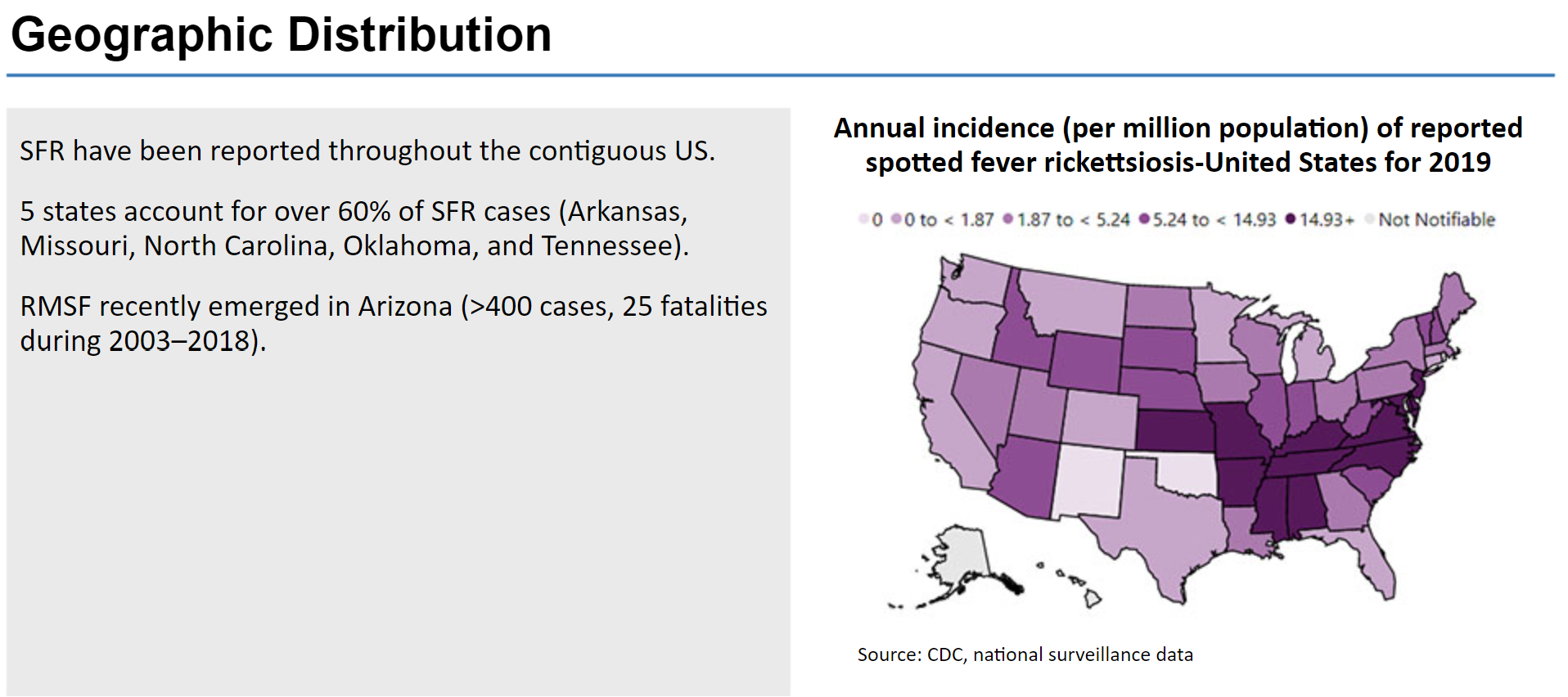

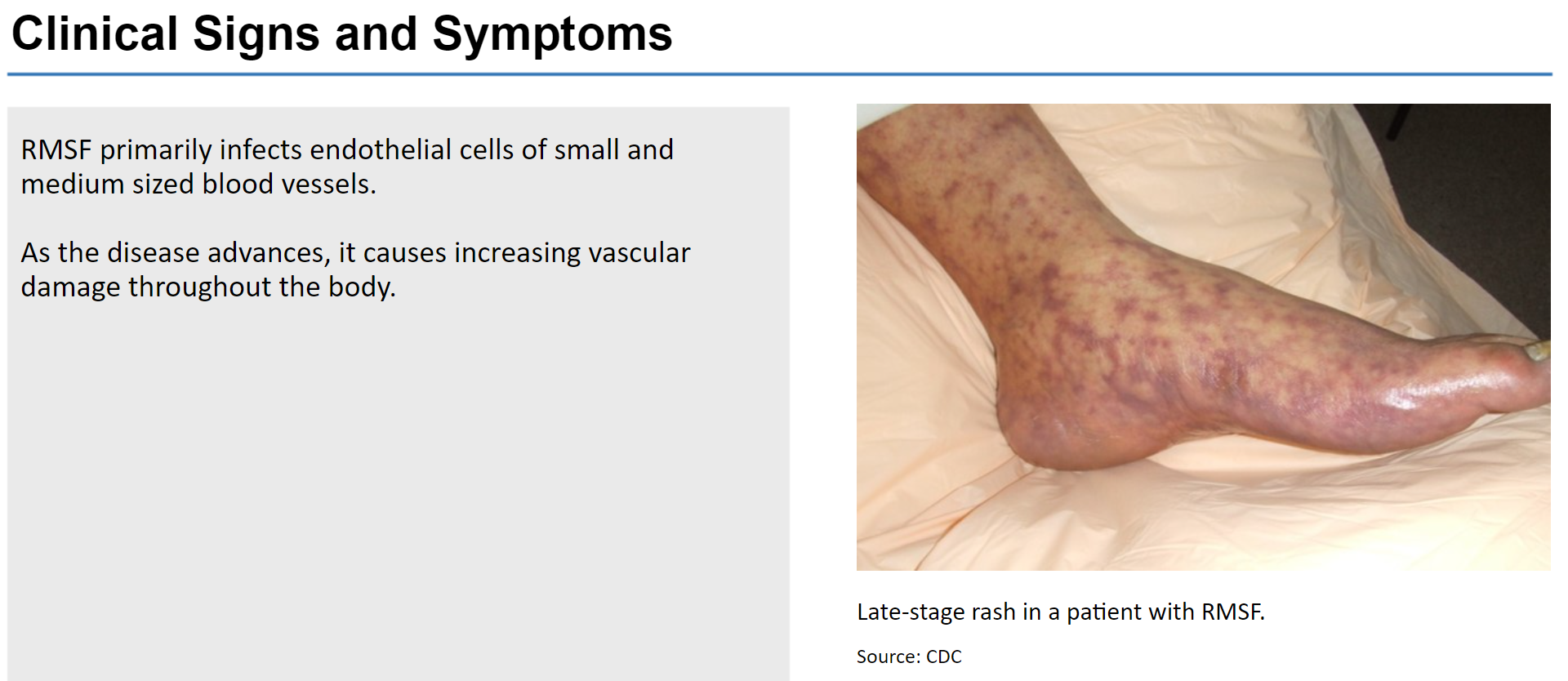


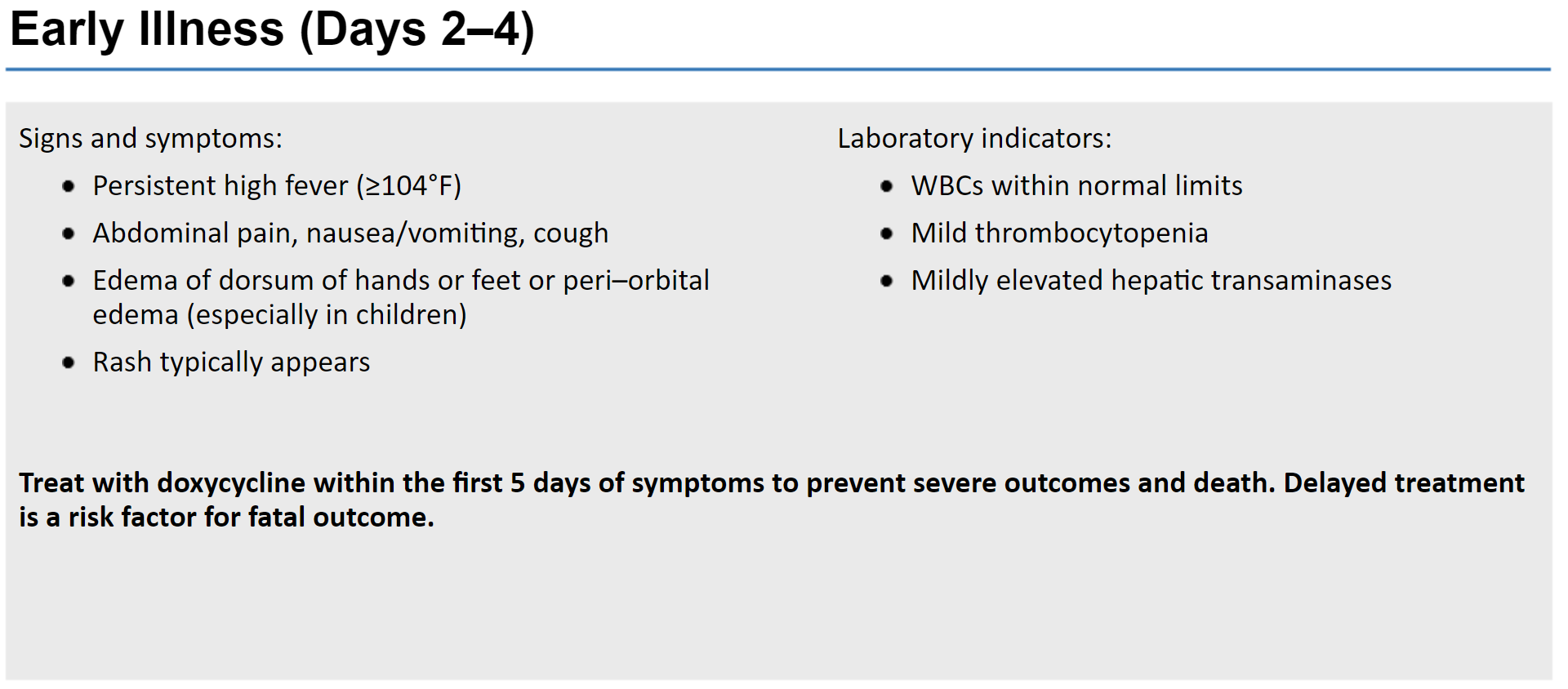




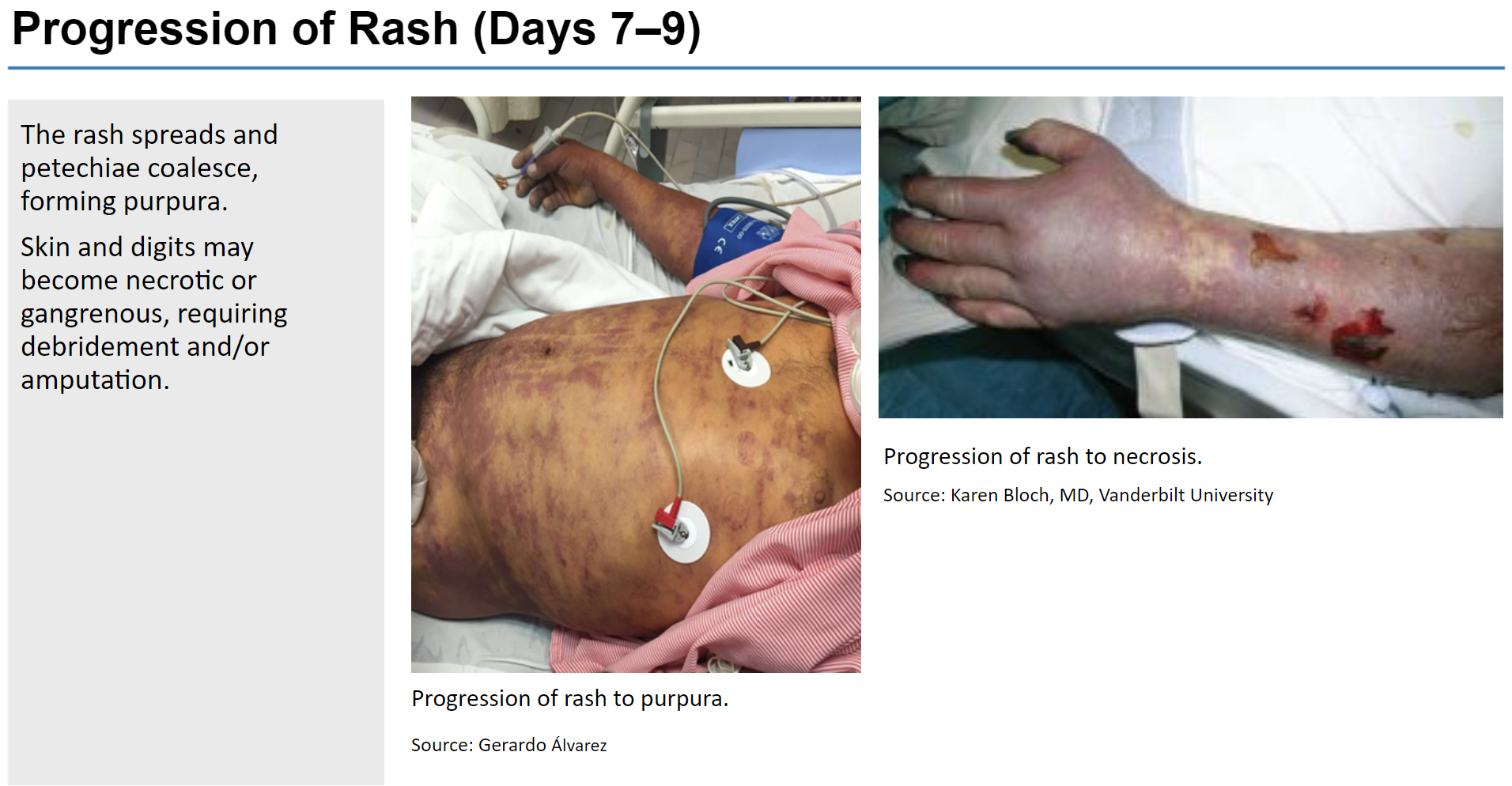



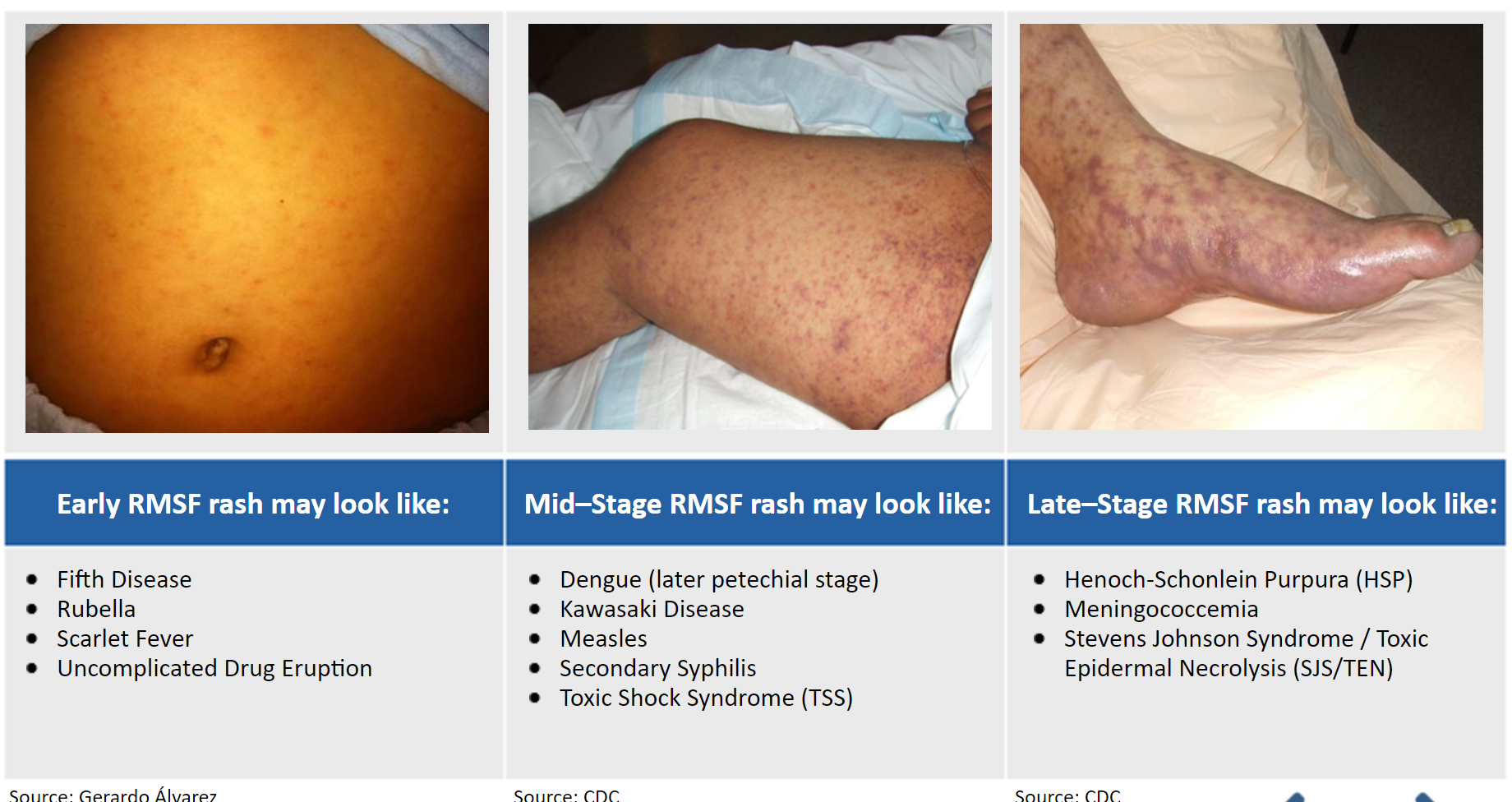

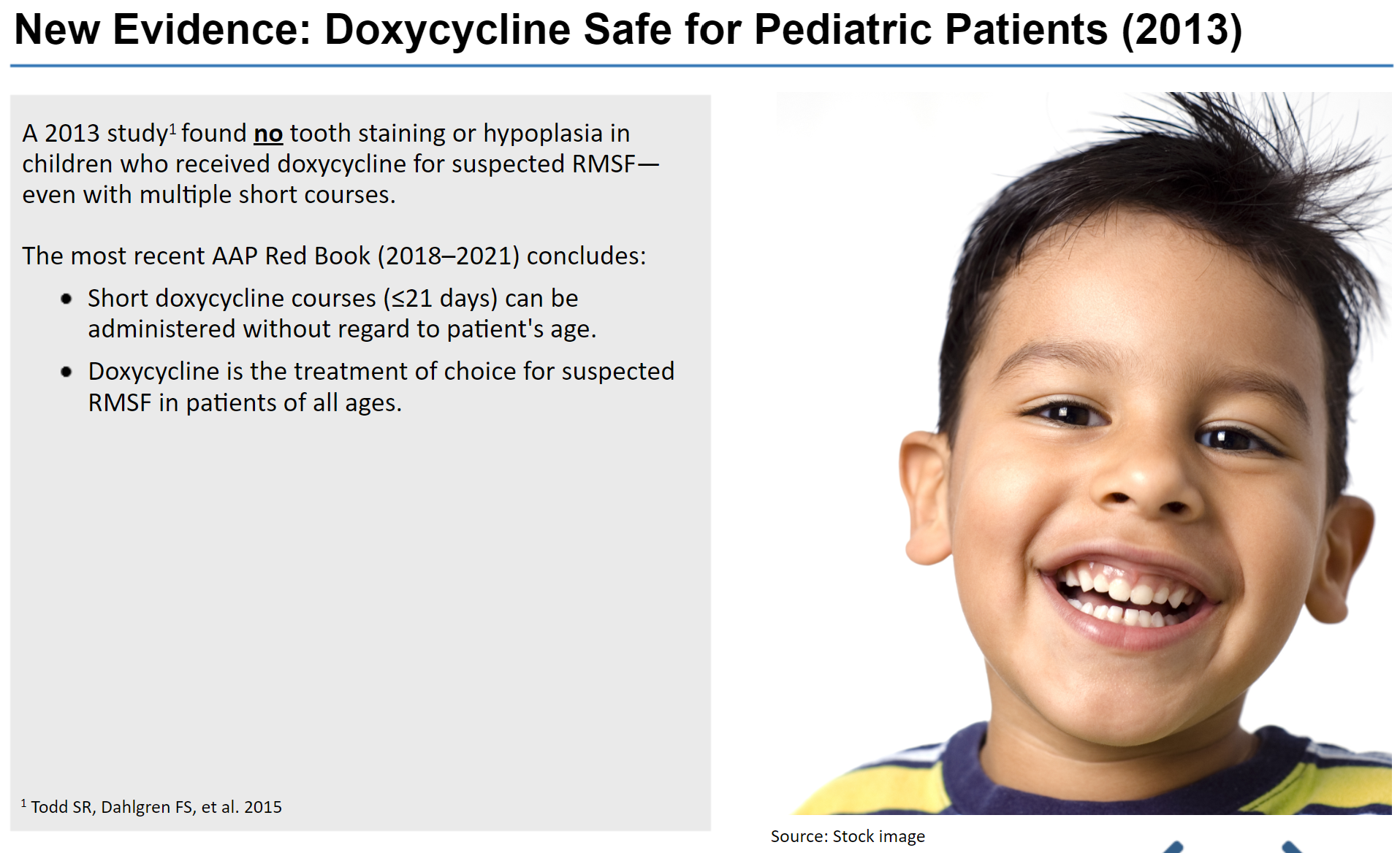
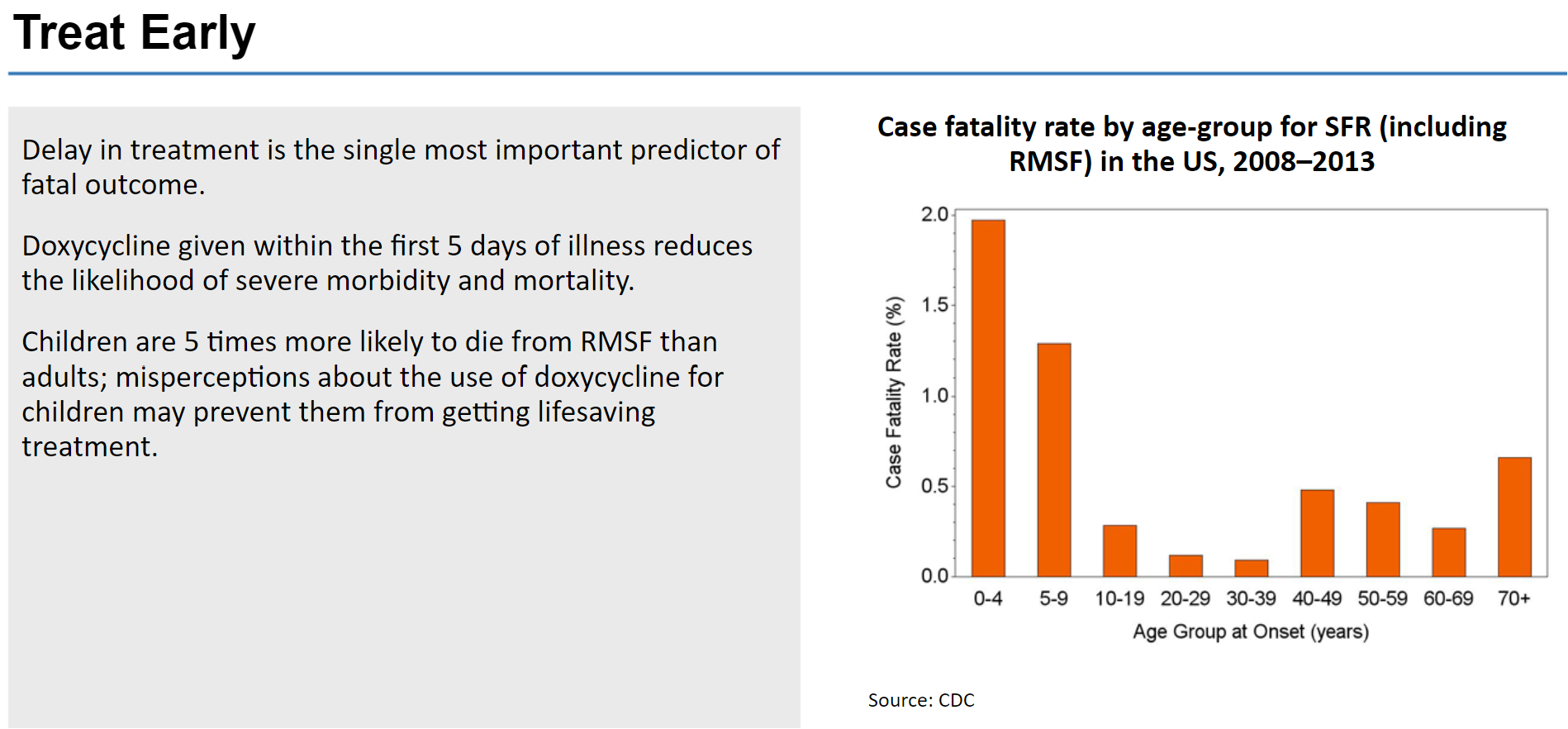


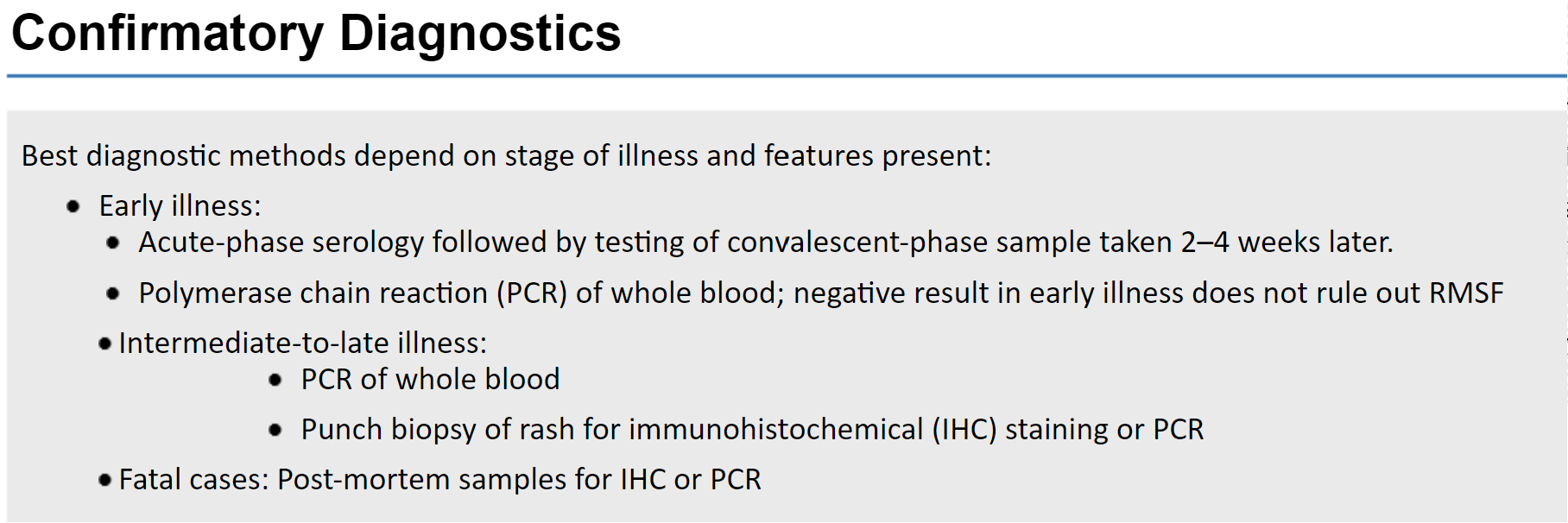



Other investigations
- CBC: may see leukocytosis (elevated WBC) and thrombocytopenia (low platelets)
- BMP: could reveal dehydration, electrolyte imbalances, or a metabolic acidosis
- LFT: may be slightly elevated as well.
Keep RMSF in your differential whenever you are dealing with fever, headache, myalgia, and potential tick exposure!
Prevention Strategies
Providers can prevent future tickborne disease by encouraging patients to prevent tick bites:
- Limit exposure to tick habitats.
- Use Environmental Protection Agency (EPA)-registered insect repellents and protective clothing.
- Treat pets with veterinarian-approved tick preventives.
- Check for ticks following outdoor activity.
- Remove attached ticks immediately.
Use Repellents & Protective Clothing
Use Environmental Protection Agency (EPA)-registered insect repellents containing one of the following active ingredients:
- DEET
- Picaridin
- IR3535
- Oil of lemon eucalyptus (OLE)
- Para-menthane-diol (PMD)
- 2-undecanone
Treat clothing, boots, and gear with products containing 0.5% permethrin or buy pre-treated clothing.
A single treatment lasts through several washes (follow product instructions).

